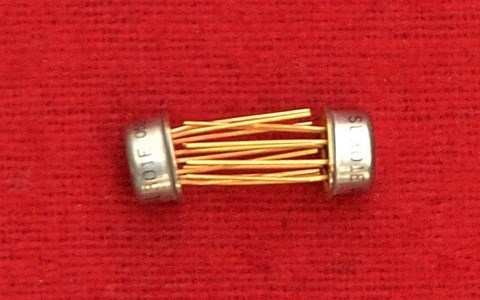SL301 Dual NPN Transistors
DESCRIPTION
The SL301 is dual NPN transistors manufactured as monolithic integrated circuits. Their close parameter matching and thermal tracking are considerably better than conventional 'two chip' duals; the frequency response is equally superior.
The SL301 is pin-compatible with existing SL300 series products and available in both metal can (CM) and ceramic dual-in-line (DG) packages.
FEATURES
- Close VBE Matching
- High Gain
- Good Frequency Response
- Excellent Thermal Tracking
- Differential Amplifier
- Comparator
- Stable Current
VOLTAGE RATING
The maximum voltage allowed between collector and emitter of each transistor is limited by dissipation and voltage breakdown. Assuming dissipation is low the rating may be determined from the following details:
(a) Forward bias condition
If the transistor is conducting the maximum collector-emitter voltage allowable is at least equal to VCEO (12V). In cases where the collector current does not exceed 5mA, and a resistor R is connected between base and emitter the VCER rating may be determined from Fig. 8; this voltage lies between 12V and 20V depending on the value of R.
(b) Unbiased condition
If the transistor is operated with no connection to the base, the maximum safe collector-emitter voltage is VCEO (12V). In cases where the base-emitter voltage has been reduced, so the transistor is conducting at a low level, it is generally permissible to increase this towards VCBO (20V).
(c) Reverse biased condition
If the base of the transistor is connected via the resistor to a supply voltage equal to, or more negative than, the emitter voltage the maximum collector-emitter voltage VCEX allowable (assuming negligible collector current) is limited by VCBO (20V). For example, if the base is at -5V respect to the emitter, the maximum collector voltage will be + 15V.
